Before I start this review, I must again thank @Kenc and the folks at Toymany for gifting me this set as a review sample for the Blog!
The set we are looking at today consists of eight figures of domestic pigs. There are four sculpts: 1) sow, standing; 2) boar, sitting; 3) piglet, resting; and 4) piglet, standing. Each set of four comes painted either solid pink or pink and grey. As a set, the two groupings of pigs are only marketed as ‘pink’ and ‘grey’. However, for the individual figures on their website, Toymany markets the bicolored/grey pigs specifically as the breed Piétrain. They don’t give a specific name to the pink pig, but the term ‘pink pig’ commonly refers to the American Landrace or the American Yorkshire breeds. The American Yorkshire is much more common and widespread, but there is a morphologic trait in these toy pigs that in my opinion favors the American Landrace (more on that below), so that’s what I will document it as in my collection. The domestic pig an animal that needs no introduction, but I will do a brief introduction of each breed before I cover the figures in detail.
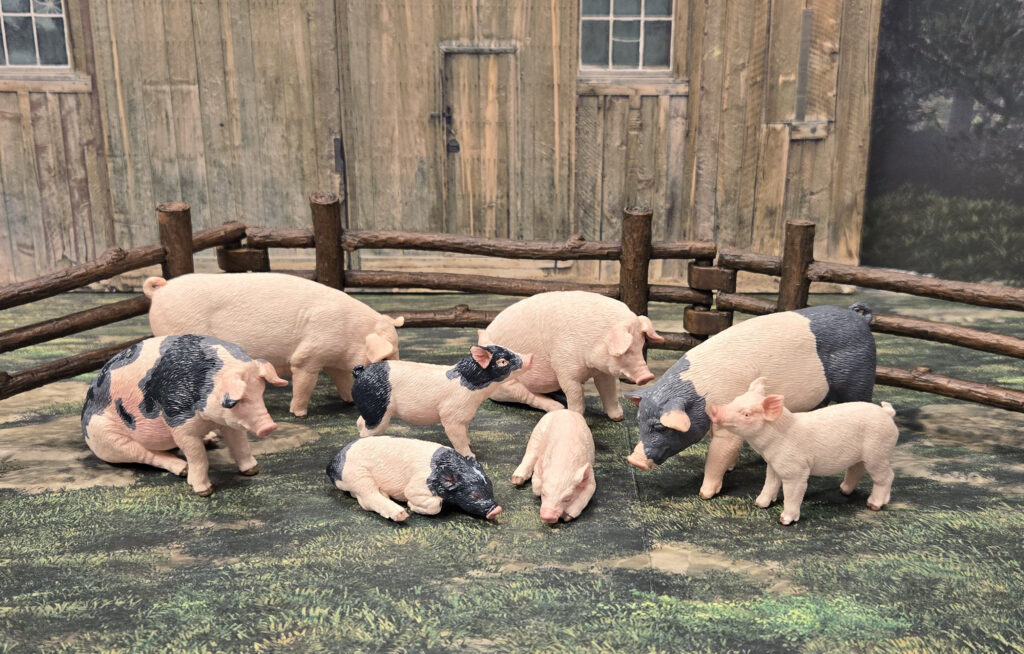
American Landrace
The American Landrace is derived from Danish Landrace brought to the United States in the early 1930s. The Danish Landrace itself is derived from various Dutch pigs mixed with the Large White from England. The Landrace was originally brought to the US for cross-breeding and research purposes, and there was initially never an intent to create a purebred commercial product. Among the other breeds they were mixed with include the Poland China and hybrid Landrace from Norway that carried Norwegian, Danish, and Swedish Landrace DNA. However, in the 1940s, that restriction was lifted and in 1950 The American Landrace Association was established.
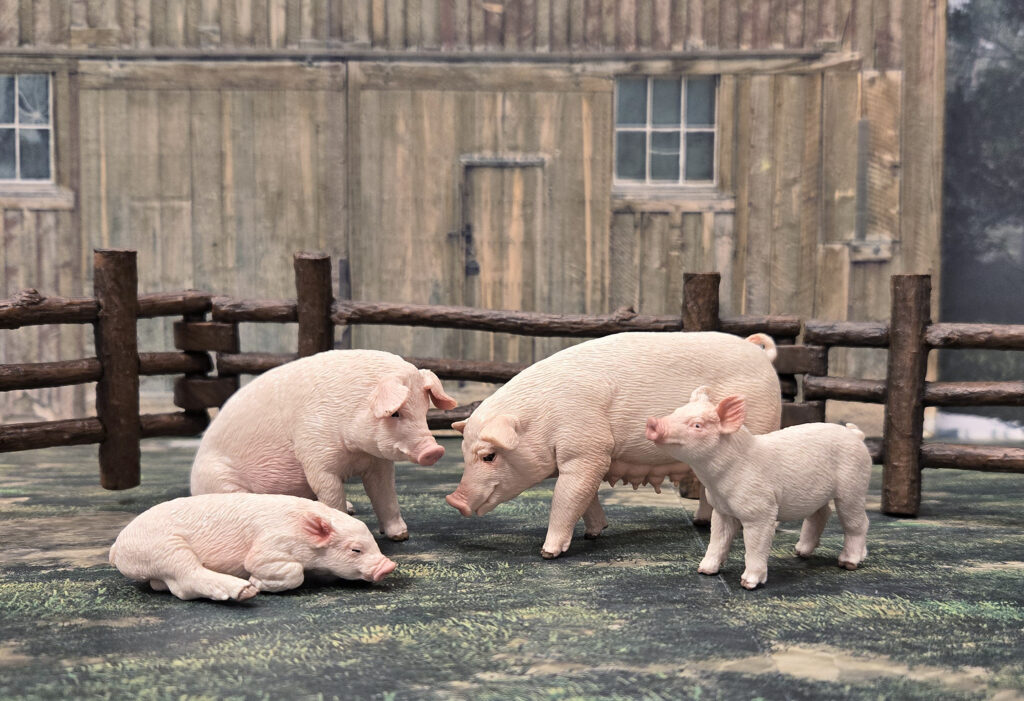
The standing adult sow measures 8.5 cm in total length with a height of approximately 4.7 cm. The sitting boar is harder to measure, but is clearly in scale with the sow. I had difficulty finding metrics to calculate scale, as pigs are usually judged by weight rather than height or length. The Danish Landrace has a height of 90 cm, which would put the adults at a scale of 1:19 assuming the Danish and American Landrace are roughly of equal height. I also found a paper about the dimensions of the modern domestic pig which indicates that height should be measured at the highest curvature of the body and not just the shoulders. If anyone familiar with swine breeding knows otherwise, I’d be happy to learn!
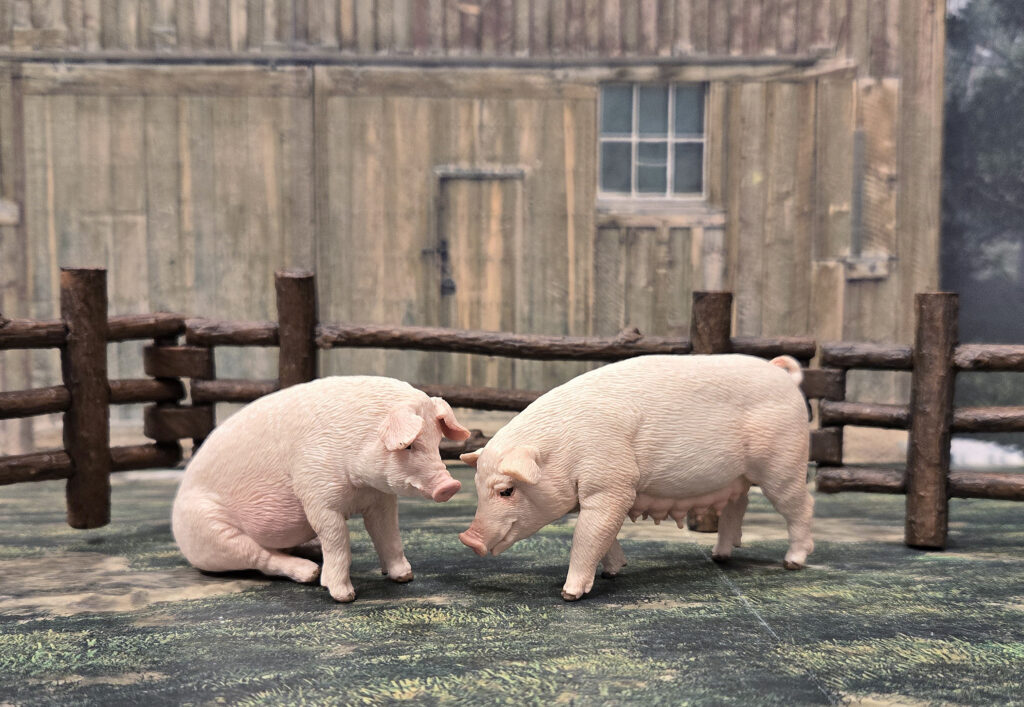
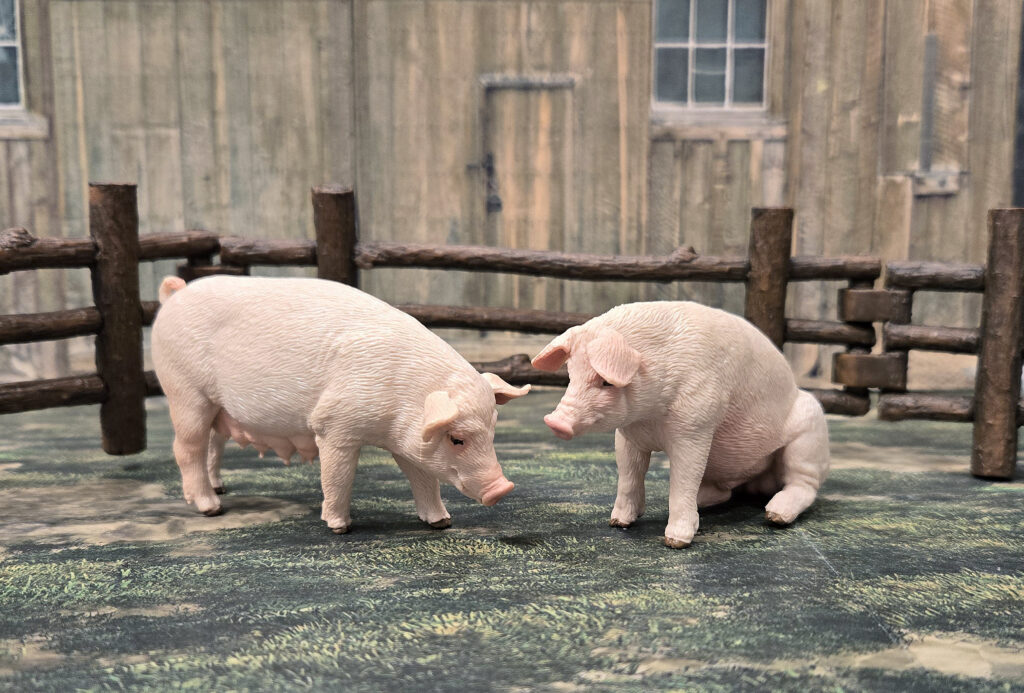
The adult pigs are sculpted with the kind of quality we have seen in other recent Toymany figures. An incredible amount of detail goes into them, including fine wrinkling and fine hairs over most of the body. The ears are drooping, which is the main reason I favor these pigs being American Landrace rather than American Yorkshire, the latter of which typically has erect ears. When preparing the images, I noticed a seam around the head of the sow, something I never saw with the figure in-hand (which means it probably wouldn’t be a distractor for shelf display). The two sexes are easily separated by the sculpting of appropriate organs :-). The base color is a pale pink, with darker pink infuscations around the ears, eyes, nose, tip of the tail, belly, nipples (sow), and genitalia (boar). The hooves and adjacent dew claw and sole are brown. The eyes are brown with dark pupils (such detail for a small eye!).
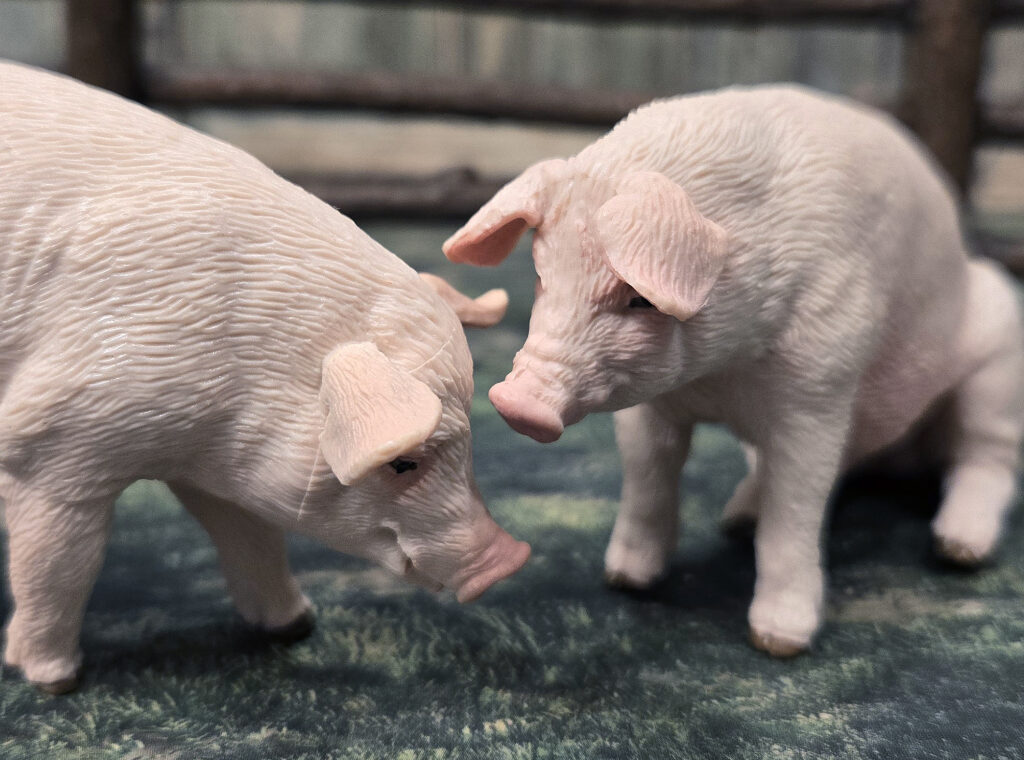
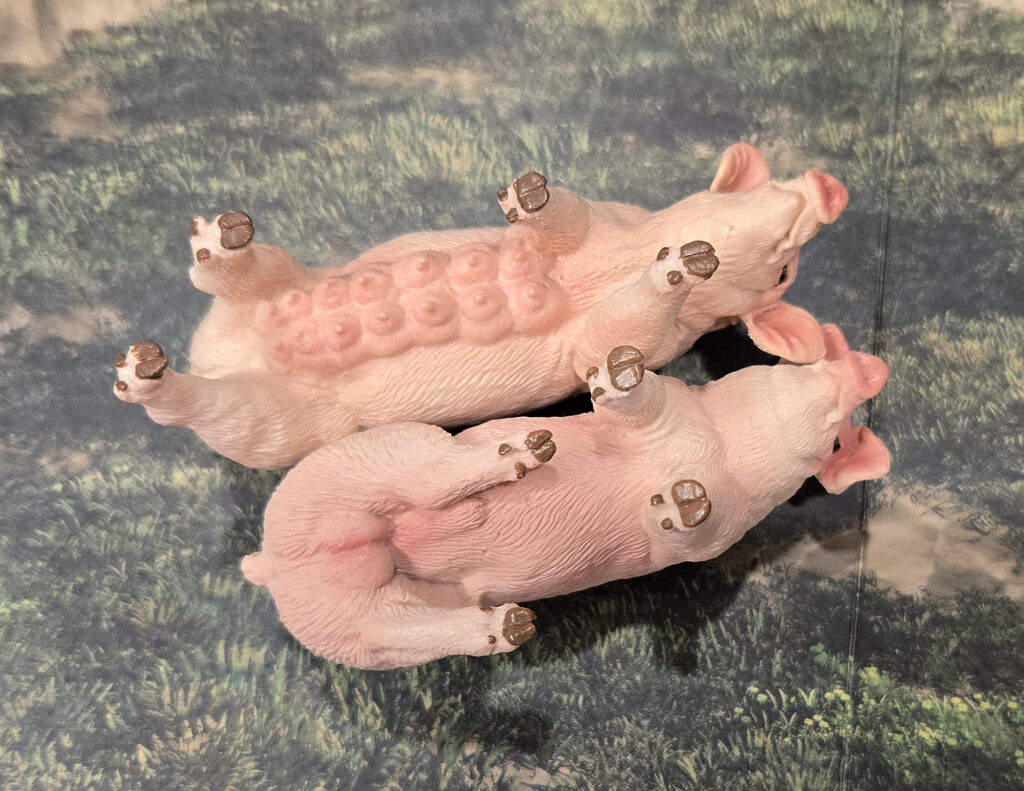
The two piglets are sculpted with a similar quality of the adults. The standing piglet is about 5.8 cm long and 3.0 cm high at the shoulder. The resting piglet is 5.7 cm across its longest points. I cannot calculate a scale, but they are in a comparable scale with the adults. The paint is similar to the adults, except on the feet only the hooves are brown and the eyes, being smaller, are dark monochromatic dots.


Piétrain
The Piétrain is a Belgian breed of pig, hailing from Wallonia where it gets its name from the village of Piétrain. The origins of the breed are not completely known, but is appeared around 1920 and was formally recognized around 1950. It’s believed the Piétrain was a result of selective breeding to support a genetic mutation resulting in muscular hypertrophy. Unfortunately, it was also susceptible to porcine stress syndrome. In the 1980s and 1990s, the breed was mixed with the Large White to develop a strain of Piétrain that lacked the gene for the syndrome. Today, the Piétrain is bred mainly in Europe, especially Belgium, Germany, Spain, and the United Kingdom. In the UK, the Piétrain was bred with Saddleback to create a breed again less susceptible to porcine stress syndrome. Pure Piétrain are rare in the UK today, and are mainly kept for breeding stock and not commercial use.
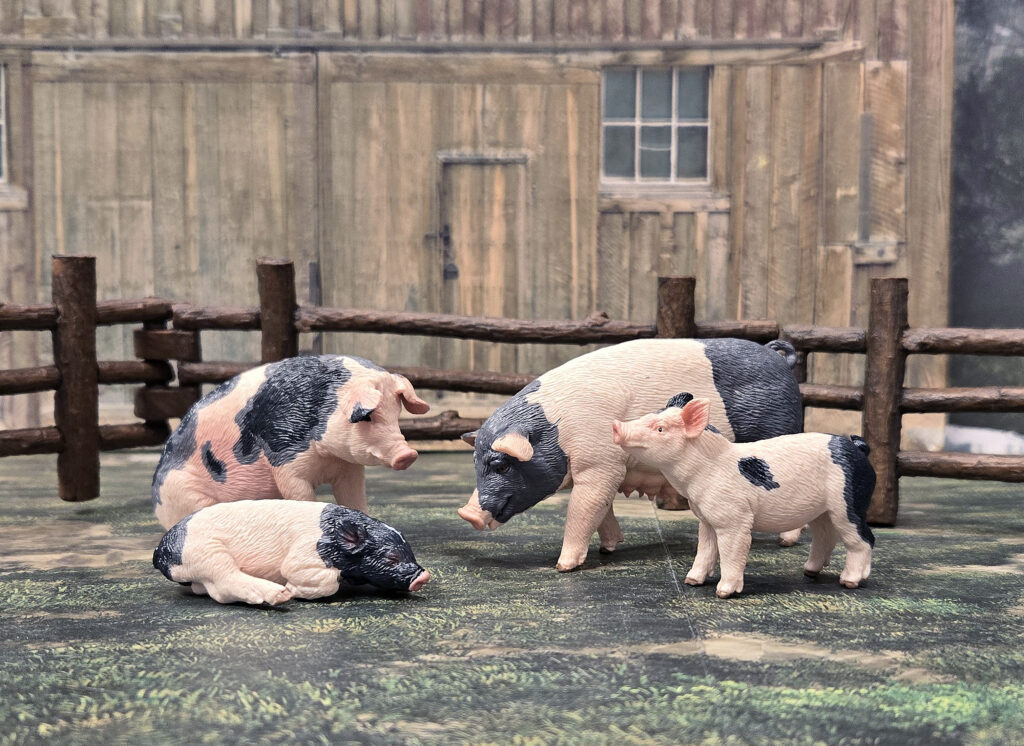
I won’t have to go into as much detail for these pigs, since I have already eluded to the fact that they are the exact same sculpts used for the American Landrace. I was able to find metrics on the Piétrain to calculate scale. Boars are on average 90 cm tall while sows are on average 85 cm tall, putting them in the 1:18-1:19 scale. The Piétrain has semi-lop ears, so the position of the ears in these figures works for that breed just as well as it does for the Landrace. What makes the Piétrain stand out is its interesting color. The base color is ‘white’ (i.e., pale pink) with various large dark grey maculae bordered with a lighter shade of grey. This color pattern is well-executed in these figures, although the maculae on the sow are only pale grey. Promotional images on Toymany’s website seem to indicate that this was intended, and it’s not a factory error on my example. I should also point out the darker grey has a semi-gloss to it, which creates glares in some of my images. As with the American Landrace, the hooves, dew claws, and soles are brown. The standing piglet also has its dew claws and soles brown, but the resting piglet does not.

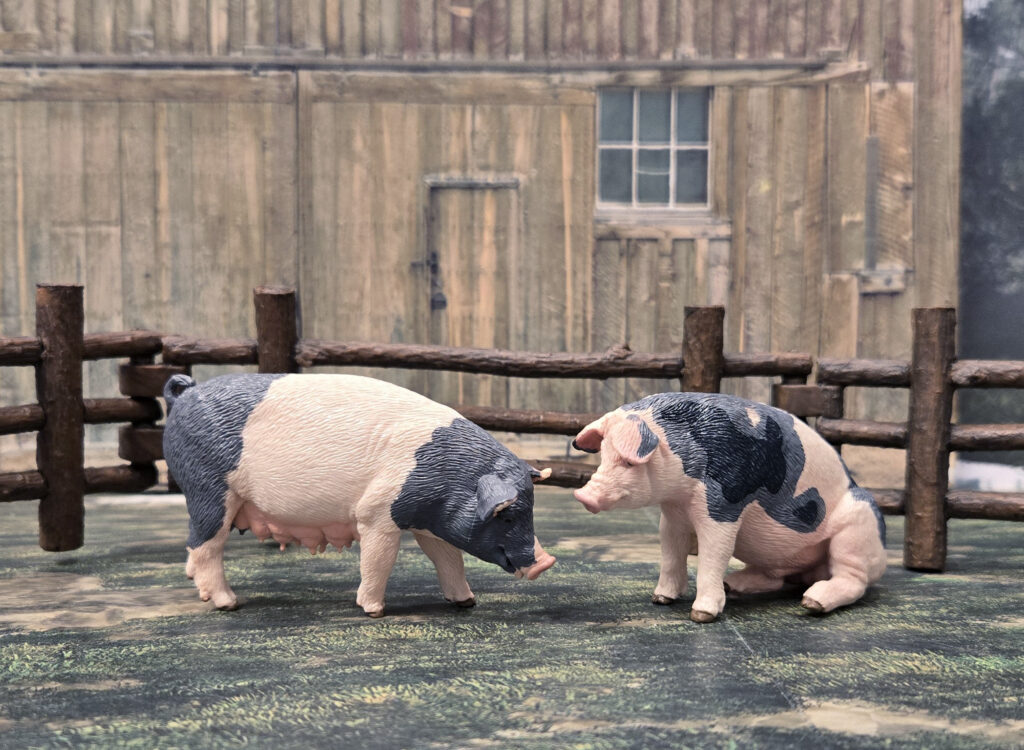

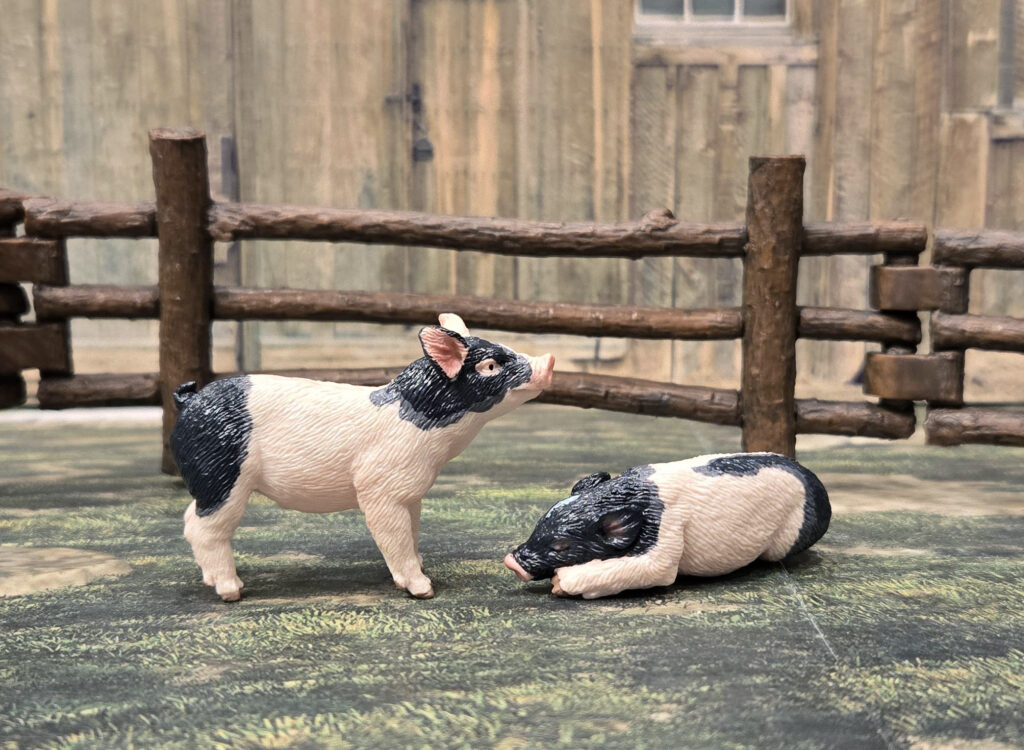
I know I am starting to sound like a broken record, but with this set of pigs, Toymany is proving yet again they are producing very high-quality figures, and usually at a much cheaper price point than most standard-sized figures from Western companies. There are MANY figures of domestic pigs out there, so my guess is this set would appeal most to those who like to collect multiples to create family and farm scenes. Every time I get one of these sets from Toymany, they are making it harder and harder for me to be a synoptic collector LOL. Luckily, when it comes to domestic hoofstock (with the exception of horses), I am becoming more and more a breed completist, especially for cattle, sheep, and pigs. This set is available on Toymany’s website. Also, every component is sold individually on their site, if one only wanted one or a couple examples from the set. Use promotional code TMAFBM10 when purchasing directly from their website and receive a 10% discount.
Disclaimer: links to Ebay and Amazon on the AnimalToyBlog are affiliate links, so we make a small commission if you use them. Thanks for supporting us!




